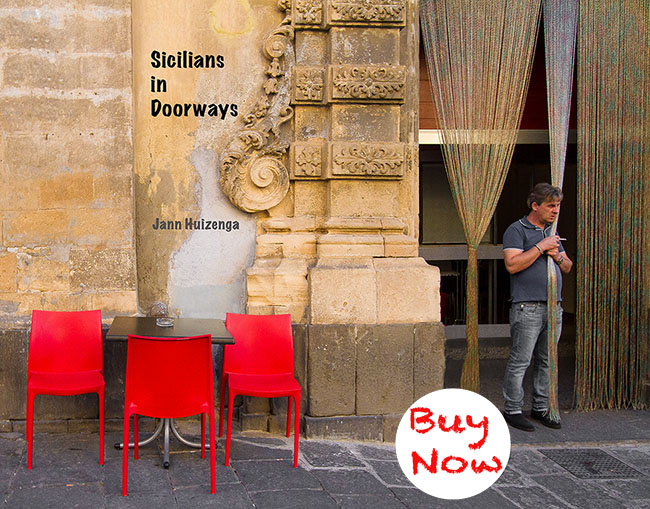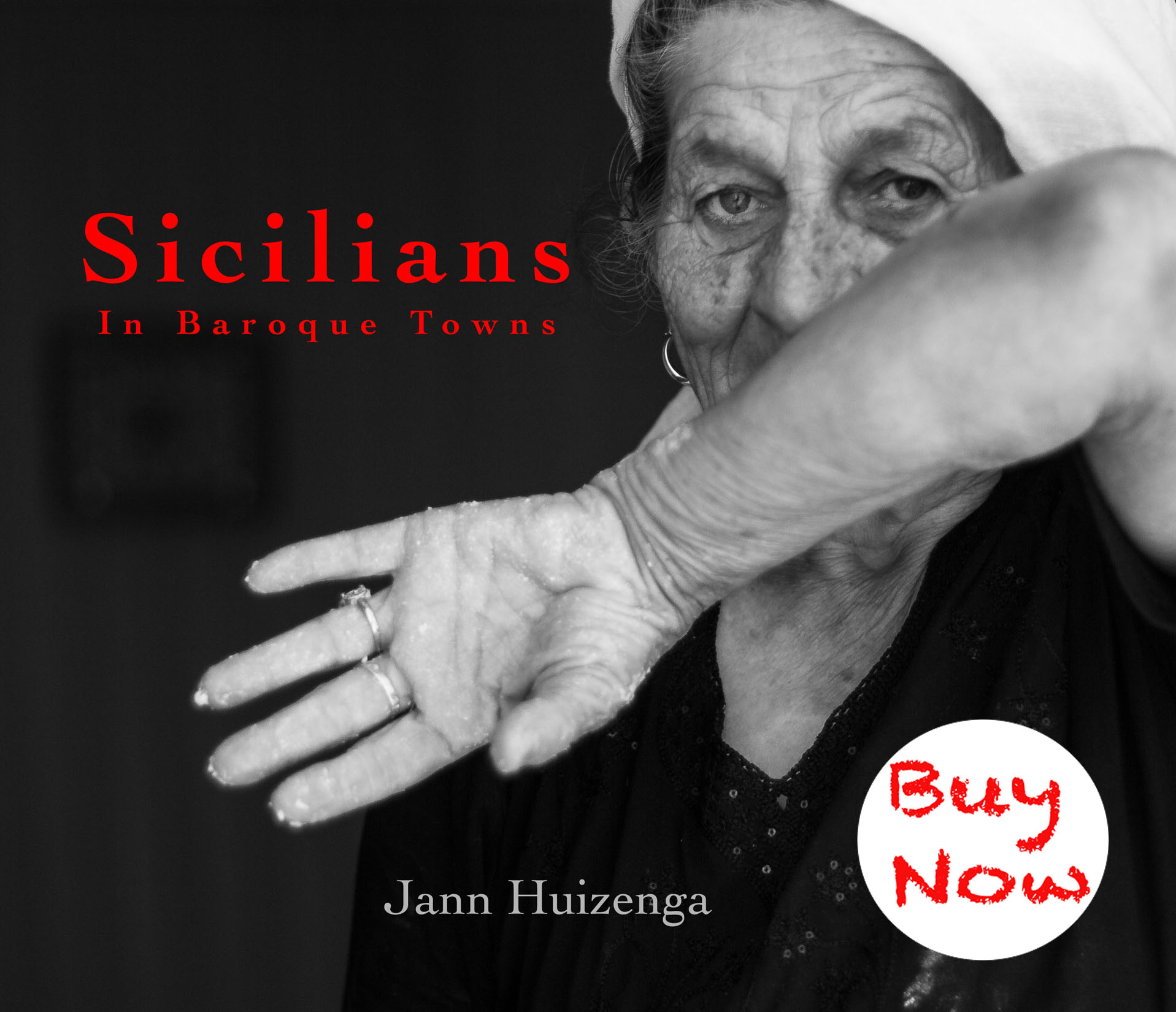January 10, 2010
In my new incarnation as a siciliana, I look around wide-eyed. Then I
mimic
copy
follow
ape
echo.
Above is my version of the famous staircase at Caltagirone. The 25 tiled steps are disturbingly steep and narrow, a sheer cliff that I scale like a mountaineer.
The real deal in baroque Caltagirone is wide and grand—142 steps high and the size of a two-lane highway.
The old scala—tiled in the 1950s—bears motifs from as far back as the 10th century and bursts with vivid Caltagirone colors: sunny citrus, shiny indigo, acid green. There are mythic birds and beasts, nobles, flowers, and geometric designs. Sicilians learned majolica production from the Arabs, who had a “monumental influence” on Sicily, and many of the Escher-like designs of North African zellij found their way here.
My tumbledown staircase turned into an ordeal, the way these things do. The work dragged on for a year and a half, longer than it took to tile the entire grand staircase at Caltagirone.
Come è possibile, you ask?
Well, I measured only one step before placing the entire order for 100 hand-painted tiles, assuming the steps were of equal size.
Oh, you naïve straniera you.
My stonemason shook his head sadly and managed to grind down some of the tiles without spoiling the designs too much—and even chink-chinked away at some of the too-small steps. But for the too-big steps I measured again, ordered again, waited again, dashed back and forth to Caltagirone, waited some more.
Not only that: I had to sack the mason for an unrelated disaster in the middle of things (a blog topic for later if I dare).
In the end, though, my pesky staircase has gotten hold of my heart. It’s sweet. “Nun si mancia meli senza muschi,” as Sicilians say. You can’t eat honey without flies.








